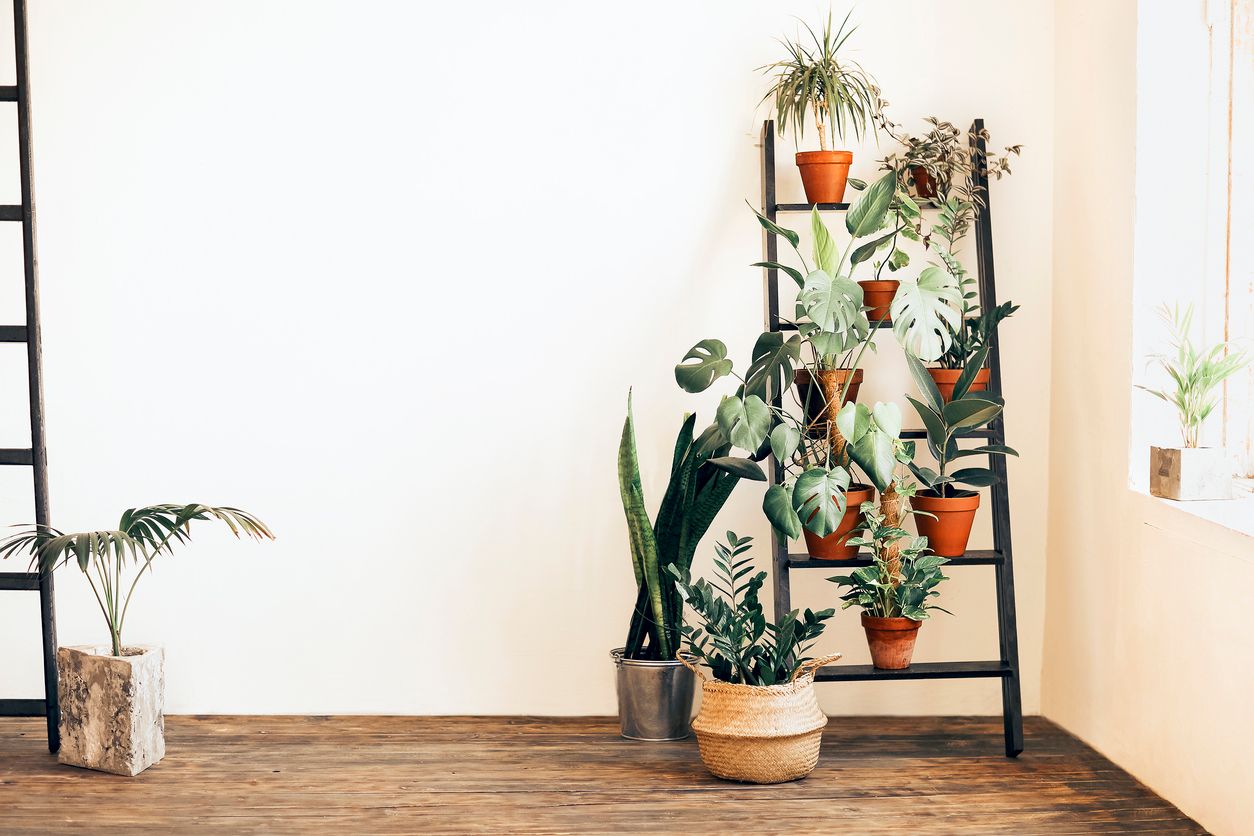How To Keep Indoor Plants Alive During Winter
During the warmer months, indoor plants come alive, basking in the gentle embrace of the summer sun. They eagerly unfurl new leaves and blossoms, spreading their lush foliage across your home and bringing vibrant greenery and blossoming blooms to your living space. But when winter arrives with its shorter days and chilly temperatures, houseplants can […]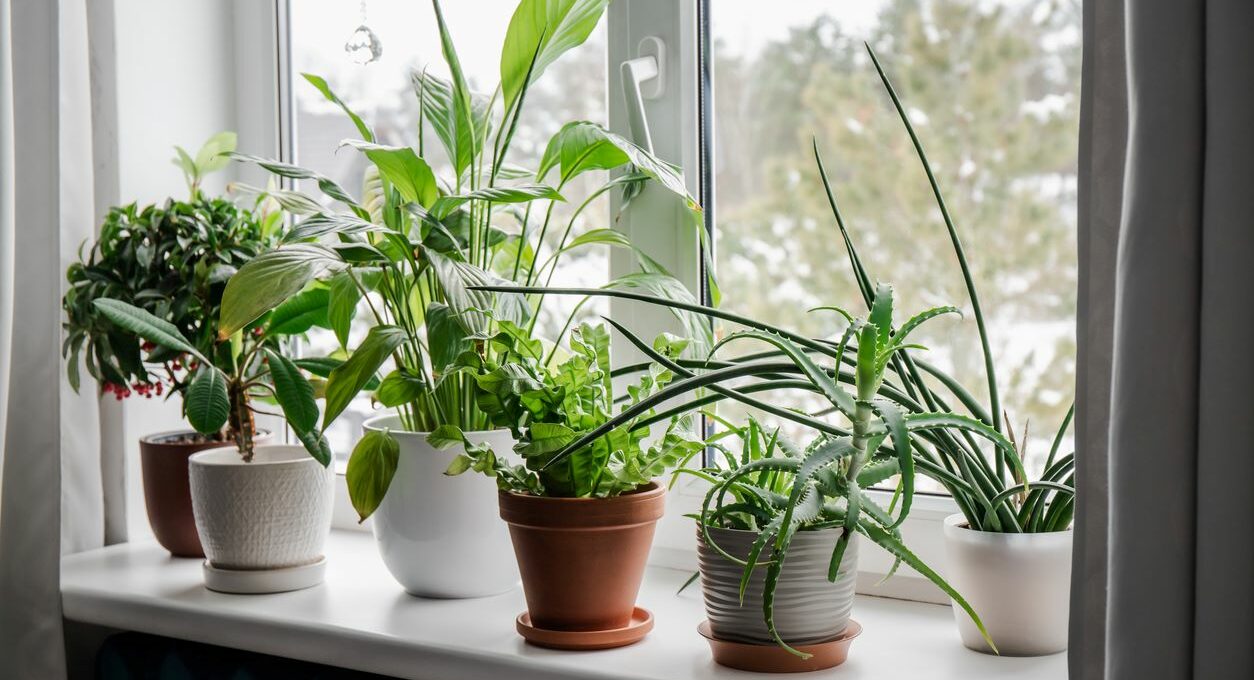
During the warmer months, indoor plants come alive, basking in the gentle embrace of the summer sun. They eagerly unfurl new leaves and blossoms, spreading their lush foliage across your home and bringing vibrant greenery and blossoming blooms to your living space. But when winter arrives with its shorter days and chilly temperatures, houseplants can enter a state of dormancy.
It’s like a bear hibernating for the winter—it closes up shop for a few months and takes a nice, long nap. The tricky part is keeping dormant and winter plants alive without the easy availability of sunshine and warmth. Our guide is here to offer helpful tips on keeping houseplants alive in winter, inform you about the impact and effects of winter changes on your indoor plants, and give you the inside scoop on our top choices for the best winter indoor houseplants.
Adjusting Your Indoor Plant Care Routine for Winter
The changing seasons have a direct impact on your indoor plants. Even when you move some plants from outdoor to indoor settings for the winter, they are influenced by the altered environment, including reduced humidity, lower light levels, and temperature fluctuations.
Pests, overwatering, and overfertilizing also commonly affect houseplants in the winter, calling for an adjustment in your plant care routine. Houseplants require less water and fertilizer during the dormant season, so reduce the amount and frequency of watering and feeding. Without a change in your routine, plants can become sickly—stunting their growth, causing wilting and dropping leaves, and even possibly causing plant death.
Indoor Plants for the Winter and Lowlight Conditions
A wide variety of winter indoor plants thrive in lowlight conditions and with reduced watering patterns. Most of these top winter houseplants are low-maintenance, allowing you to appreciate their beauty without needing constant attention and care! Our top 10 favorite indoor winter houseplants include:
- Snake Plant
- ZZ Plant
- Philodendron
- Spider Plant
- Poinsettia
- Pothos
- Peace Lily
- Amaryllis
- Christmas Cactus
- Rubber Plant
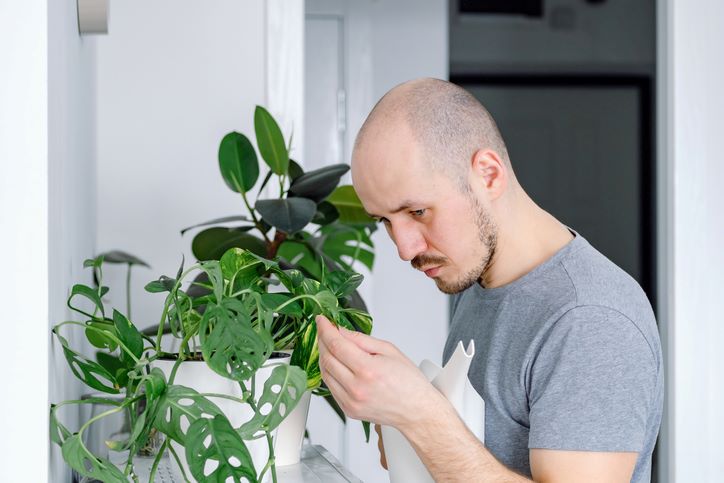
How To Avoid Overwatering and Underwatering Winter Indoor Plants
Overwatering and underwatering are common issues affecting the health of your plants in the winter. Designating a consistent watering schedule that takes into account various winter considerations is necessary for your greenery, including the timing of watering, the appropriate amount of water to use, and the frequency of watering. Steps to avoid underwatering and overwatering during the winter include:
- Check the Soil First. Push your finger two inches down into the soil, about to the knuckle, to feel for moisture. If it’s moist, don’t water. Research your plants to see if the soil must be completely dry between waterings.
- Avoid Watering the Leaves. Water from the base of the plant, avoiding splashing the leaves. If the leaves are sprayed or splashed with water too often, mold can develop.
- Water During Daylight Hours. With the presence of sunlight, the moisture can evaporate quickly. Watering at night means the soil will be moist for too long, encouraging root rot and fungus.
- Drainage is Crucial. If your houseplant can’t drain excess water, it’ll be trapped within the soil, which leads to root decay and mold.
It can be easy, however, to forget which plant was watered when and just as quickly drench its roots once again with water. The Greg Plant Identifier & Care app can help you keep track of all your houseplants, sending reminders of which plants need to be watered soon and which have already been watered.
Temperature and Lighting Considerations To Keep Your Houseplants Alive
With fewer and fewer daylight hours each day as the winter solstice approaches, your houseplants may cry out for more light. Well, they won’t actually cry out, but you’ll see them begin to change—shifting ever so slightly by becoming leggy with tall stems and sporadic leaves leaning toward the light. Houseplants may also change color without enough light, with leaves turning pale and dropping quickly.
Here are some simple ways to give your houseplants more sunlight during the winter:
- Move Plants to the Sunniest Windows, Away From Any Drafts.
- Clean Windows Allow for More Light To Pass Through.
- Grow Lights and LED Bulbs Are Great for Extra Lighting.
- Elevate Plants on Tables, Stools, and Bookshelves for More Access to Light.
- Dust off the Plant’s Leaves so They Can Absorb More Sunlight.
Winter houseplants are vulnerable to cold shock if placed too close to drafts, air-conditioning vents, or freezing windows. On the other hand, avoid putting your plant near heating sources as this can cause wilting, scorching, and an excessive loss of water.
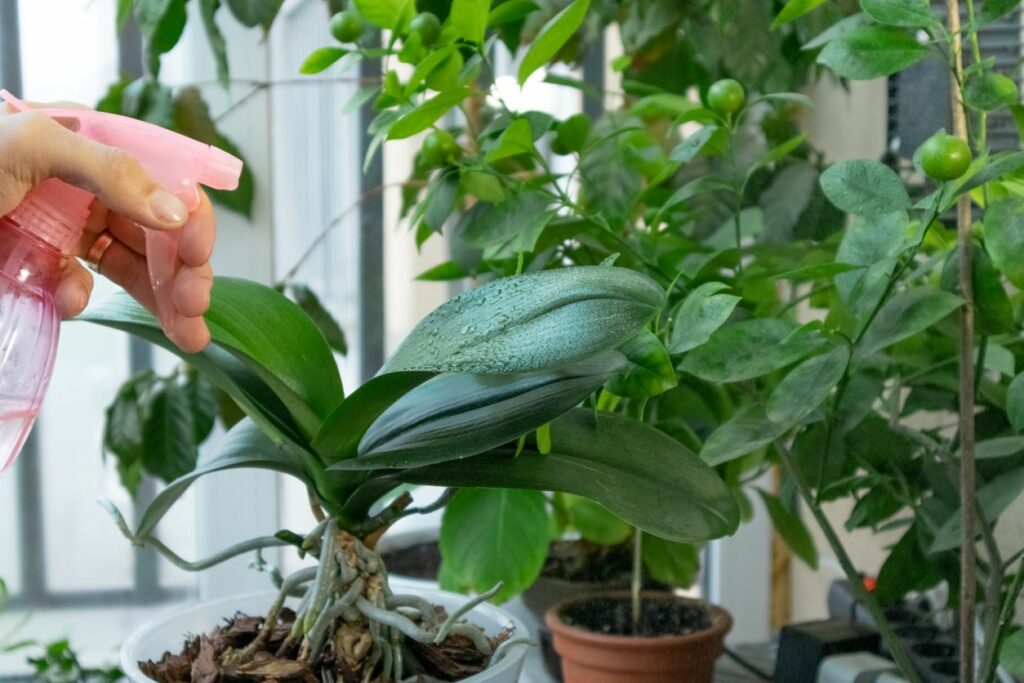
Maintaining Indoor Humidity Levels
Low humidity can have several adverse effects on plants, causing them to dry out quicker, leading to curling and discoloration of the leaves, stunted growth, and nutrient deficiencies. Most houseplants thrive in an environment with a humidity level ranging from 40% to 60%. But achieving this perfect humidity level, especially during the drier months, can be challenging.
Don’t worry! There are numerous simple and effective methods using everyday household items that can function as natural humidifiers to help maintain the ideal humidity level for your indoor plants, such as:
- A Dedicated Home Humidifier
- Boiling Water on the Stove and Stovetop Cooking
- Placing Water in a Bowl Near Heating Vents
- Opening the Dishwasher or Shower Door After Use
- Drying Laundry
- Leaving a Bit of Water in the Bathtub
- Misting Plants With Water
- Positioning a Pebble Tray Under the Plant
- Grouping Houseplants Together
- Giving Your Plants a Shower
Preventing Plant Pests and Dealing With Diseases
Houseplant diseases, like root rot and powdery mildew, and common pests, including spider mites, fungus gnats, mealybugs, and aphids, can be difficult to deal with in the winter months. Because it’s cold outside, there isn’t enough space to effectively spread out and manage the issue. There are, however, many natural and safe methods for pest prevention and disease treatment, such as:
- Inspect Tops and Undersides of Leaves and Discolored Leaves Every Other Week.
- Isolate New Plants From Existing Plants for at Least 30 to 60 Days.
- Clean Plant Leaves and Stems With a Damp Cloth and Remove the Dead Leaves.
- Sprinkle Diatomaceous Earth in the Soil or Wipe the Leaves With Neem Oil.
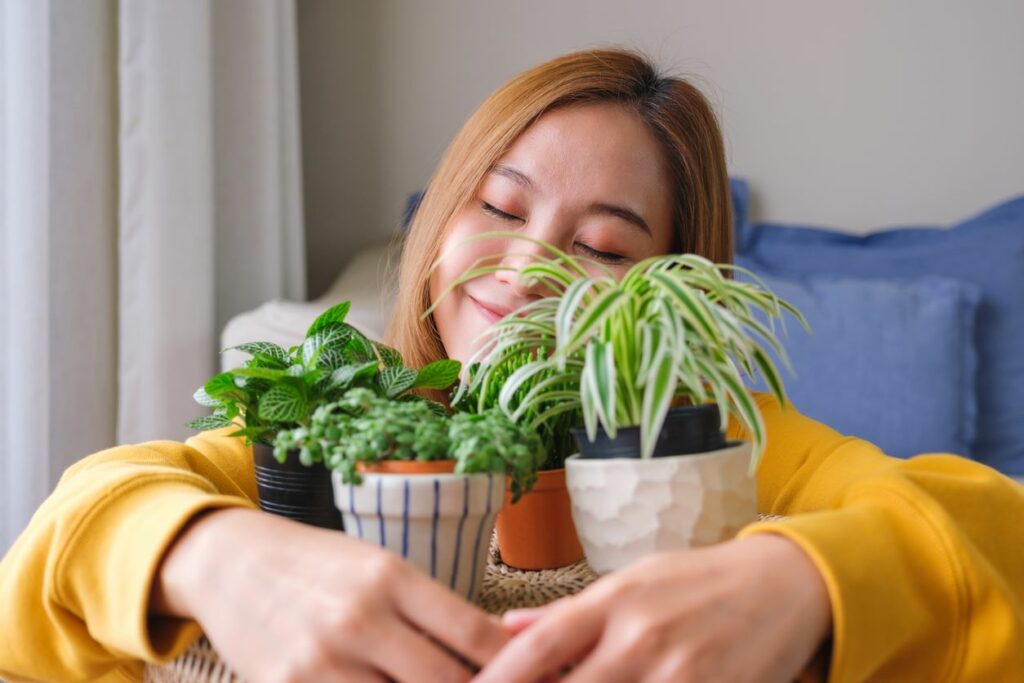
Frequently Asked Questions About Keeping Indoor Plans Alive During Winter
Yes, many indoor plants enter a state of dormancy or slowed growth in the winter due to reduced light and cooler temperatures. This is normal and doesn’t mean your plant is dying.
Most indoor plants need less water in the winter. Always check the top inch or two of soil—if it’s dry, it’s time to water. Overwatering is one of the most common mistakes during colder months.
Generally, no. Most plants aren’t actively growing in the winter, so fertilizing can do more harm than good. Resume feeding in early spring when growth picks back up.
This could be due to overwatering, low humidity, or lack of sunlight. Try moving your plant to a brighter spot and make sure you’re not watering too frequently.
You can use a humidifier, place plants on a tray of water with pebbles, or group plants together to create a microclimate. Misting can help temporarily, but it’s not always effective long-term.
Yes, moving plants closer to a bright window can help compensate for the shorter days. Just be careful of cold drafts or windows that get too chilly at night.
Light pruning to remove dead or damaged leaves is fine, but wait until spring for heavier trimming or repotting.
Enjoy Happy and Healthy Plants All Yearlong With HILLS Properties
Plenty of plants thrive in the wintertime, in the low light of perpetual twilight. Adjusting your plant care routine as the seasons change by maintaining humidity, decreasing watering, and adapting the light levels within your space is important for keeping your plants healthy and happy in the wintertime. With our blog, you can feel confident that you know how to keep houseplants alive in the winter. Or, at least, you have something to refer back to as the snow settles on the trees.
Are you on the hunt for the perfect apartment for your houseplants? Whether you’re just beginning the plant parenthood journey or have an entire jungle, HILLS Properties provides luxury apartments with high-end amenities like oversized windows, tall ceilings, and balconies. Explore our available apartment homes for rent in Ohio, Kentucky, and Indiana, or complete a contact form online to get started.
![Is It Hard To Get Approved For An Apartment? Alt text: A property manager handing keys to a new apartment resident. Searching for a new apartment is exciting, but the application process can also bring up a lot of questions. Here’s what you need to know about how to get approved for an apartment, plus tips for improving your chances and what to expect along the way. [H2] What Do Apartments Look for During the Approval Process? Each apartment community has its leasing criteria, but there are a few standard factors most landlords and property managers consider when reviewing your application: ● Income. Most communities require that your monthly income is two and a half to three times the rent. ● Credit check . A good credit score shows you’ve handled past obligations responsibly. But if your credit isn’t perfect, don’t panic—many communities are flexible and offer options for renters with lower scores. ● Rental history. A clean rental history with no evictions, lease breaks, or serious complaints can work strongly in your favor. ● Background check. Landlords may conduct background checks to ensure the safety of the community. ● Employment verification. Proof of stable employment or consistent income is key to approval. If you’re wondering how hard it is to get an apartment, it comes down to how well you meet these criteria—and how proactive you are in preparing your application. [H2] How To Get Approved For An Apartment: Five Helpful Tips If you want to boost your chances of a successful application, here are a few practical steps to take. [H3] 1. Check Your Credit in Advance Before applying, review your credit report to spot any errors or issues. If you’re concerned about a low score, consider offering a co-signer or a larger security deposit. [H3] 2. Gather Key Documents Ahead of Time Most properties will ask for the following: ● Recent pay stubs or proof of income ● Bank statements ● Photo ID ● Employer contact info Being prepared with this paperwork can speed up the apartment approval process. [H3] 3. Be Honest on Your Application Lying about income, rental history, or credit score can result in an automatic denial. Being up front gives property managers the chance to work with you on alternative solutions. [H3] 4. Budget Wisely Know what you can comfortably afford. If rent is more than 30% of your income, consider looking for something more budget-friendly or getting a roommate. [H3] 5. Ask for Help Getting Approved for an Apartment Many communities, especially those like HILLS Properties, have experienced leasing professionals who are happy to guide you. Whether it’s understanding the requirements or discussing special circumstances, don’t hesitate to reach out. [H2] What If I Don’t Qualify for an Apartment on My Own? If you don’t currently meet the income or credit criteria to qualify for an apartment , there are still ways forward: ● Use a co-signer or guarantor. A trusted friend or family member with stronger financials can back your lease in the case that your income does not meet the criteria. ● Offer a larger deposit. Be prepared to pay a higher deposit if you are applying with a low credit score. ● Consider a roommate. Splitting rent and bills between two people can help you qualify more easily. ● Look for flexible communities. Not all properties have strict requirements—some are more lenient and may accept alternative documentation or references. [H2] Ready to Find Your Next Home? Getting approved for an apartment might feel intimidating, but it doesn’t have to be difficult. With the right information, a little preparation, and the support of a responsive leasing team, you’ll be moving into your new home in no time. At HILLS Properties, we understand that everyone’s situation is unique. Our team is here to help you through every step of the application process—whether it’s your first apartment or your fifth. Explore our available apartments today and let us help you find the perfect place to call home.](https://cdn.hillsproperties.com/wp-content/uploads/2025/06/image-3.jpeg)
